- Home
- William Shakespeare
Pericles
Pericles Read online
The RSC Shakespeare
Edited by Jonathan Bate and Eric Rasmussen
Chief Associate Editors: Jan Sewell and Will Sharpe
Associate Editors: Trey Jansen, Eleanor Lowe, Lucy Munro,
Dee Anna Phares, Héloïse Sénéchal
Pericles
Textual editing: Eric Rasmussen and Lucy Munro
Introduction and Shakespeare’s Career in the Theater:
Jonathan Bate and Lucy Munro
Commentary: Lucy Munro and Héloïse Sénéchal
Scene-by-Scene Analysis: Will Sharpe
In Performance: Penelope Freedman (RSC stagings) and Peter Kirwan (overview)
The Director’s Cut (interviews by Will Sharpe and Kevin Wright):
Adrian Noble, Adrian Jackson, and Dominic Cooke
Playing Marina: Laura Rees
Editorial Advisory Board
Gregory Doran, Chief Associate Director,
Royal Shakespeare Company
Jim Davis, Professor of Theatre Studies, University of Warwick, UK
Charles Edelman, Senior Lecturer, Edith Cowan University, Western Australia
Lukas Erne, Professor of Modern English Literature, Université de Genève, Switzerland
Jacqui O’Hanlon, Director of Education, Royal Shakespeare Company
Akiko Kusunoki, Tokyo Woman’s Christian University, Japan
Ron Rosenbaum, author and journalist, New York, USA
James Shapiro, Professor of English and Comparative Literature,
Columbia University, USA
Tiffany Stern, Professor and Tutor in English, University of Oxford, UK
2012 Modern Library Paperback Edition
Copyright © 2007, 2012 by The Royal Shakespeare Company
All rights reserved.
Published in the United States by Modern Library, an imprint of
The Random House Publishing Group, a division of
Random House, Inc., New York.
MODERN LIBRARY and the TORCHBEARER Design are registered trademarks
of Random House, Inc.
“Royal Shakespeare Company,” “RSC,” and the RSC logo are trademarks
or registered trademarks of The Royal Shakespeare Company.
The version of Pericles and the corresponding footnotes that appear in this volume were originally published in William Shakespeare:
Complete Works, edited by Jonathan Bate and Eric Rasmussen, published in 2007 by Modern Library, an imprint of The Random House Publishing Group, a division of Random House, Inc.
eISBN: 978-1-58836-890-4
www.modernlibrary.com
Cover design: Gabrielle Bordwin
Cover photograph: © Photo 24/Getty Images
v3.1
CONTENTS
Cover
Title Page
Copyright
Introduction
The Critics Debate
Text and Author(s)
Romance? Late Play?
Sexuality and Gender
Time and Space
About the Text
Key Facts
Pericles
List of Parts
Prologue
Act 1
Scene 1
Scene 2
Scene 3
Scene 4
Act 2
Chorus
Scene 1
Scene 2
Scene 3
Scene 4
Scene 5
Act 3
Chorus
Scene 1
Scene 2
Scene 3
Scene 4
Act 4
Chorus
Scene 1
Scene 2
Scene 3
Second Chorus
Scene 4
Scene 5
Act 5
Chorus
Scene 1
Second Chorus
Scene 2
Epilogue
Textual Notes
Scene-by-Scene Analysis
Pericles in Performance: The RSC and Beyond
Four Centuries of Pericles: An Overview
At the RSC 124 The Director’s Cut: Interviews with Adrian Noble, Adrian Jackson, and Dominic Cooke
Playing Marina: Laura Rees
Shakespeare’s Career in the Theater
Beginnings
Playhouses
The Ensemble at Work
The King’s Man
Shakespeare’s Works: A Chronology
Acknowledgments and Picture Credits
Further Reading and Viewing
References
INTRODUCTION
A lone figure, venerable and archaically dressed, steps onto the bare stage: “To sing a song that old was sung / From ashes ancient Gower is come.” Probably begun by a hack dramatist in 1607 and completed by Shakespeare in 1608, Pericles marks a fresh departure for the master after his exclusive focus on tragedy in the previous few years (Macbeth, King Lear, Timon of Athens, Antony and Cleopatra, and the contemporaneous Coriolanus). In his next group of plays, Shakespeare worked in a much more mellow form. The sea, the voyage, the storm, the unlucky and lucky chances, the years of quest and grief, the child lost and found, the resurrection of the apparently dead: this is the matter of the enduring literary form of romance.
One of the most widely circulated and oft-repeated tales from ancient Greece was that of Apollonius of Tyre, who wandered around virtually the whole of the Mediterranean world before what he had lost was restored to him. Chaucer’s friend John Gower included a version of it in his rambling poetic repository of old stories, Confessio Amantis. Just over two hundred years later, Gower was brought back to life on the boards of the Globe Theatre, with Apollonius renamed Pericles. The poet serves as chorus, guiding the audience through the story, asking us to hold in imagination the wanderer’s ship, two great storms, and a series of landfalls at Antioch and Tarsus in the northeastern corner of the Mediterranean, way over at Pentapolis in North Africa, back at Tarsus and Tyre, and eventually at Ephesus and Mytilene on the Aegean.
Old songs are true in deep but simple ways. If we come to Pericles looking for the psychological complexities of Shakespearean tragedy, we will be disappointed. There are none of the subtle shades of moral gray which endlessly fascinate us in Antony and Cleopatra, another play which circles around the ancient Mediterranean world and which may have been written immediately before Pericles. Instead, we have to accept black and white, and, most disconcertingly, white becoming black (Dionyza is protectress one moment, murderess the next), then black becoming white (Lysimachus sets out to deflower Marina in a brothel, but ends up being deemed a fit husband for her).
The play proceeds by a series of tableaux and formal dumb shows, which offer stark contrasts: first Pericles woos a daughter whose relationship with her father is turned inward in incest, then he woos a daughter whose father banteringly pretends to play the oppressive patriarch when really he is delighted that she has fallen in love with the knight in rusty armor. The narrative begins with a daughter who is “an eater of her mother’s flesh / By the defiling of her parents’ bed.” It ends with a daughter who regenerates her father. In Pericles’ extraordinary line, “Thou that beget’st him that did thee beget,” the daughter seems to father her father without any trace of illicit desire. Having converted the clientele of the brothel, and even the randy old Bolt, from lust to honesty, now Marina brings her father from unshaven sackclothed wandering to a new life. The fifth act’s inversion of the first act’s perversion suggests that, episodic though it may be, the play has its own unity. Though the first two acts were written by another dramatist, George Wilkins, and the last three by Shakespeare, the stitching together of the plot was effectively done.
The language is more var
iable. It begins to thrill with the hum of late Shakespearean verse only from the great storm speech onward: “O, still / Thy deaf’ning dreadful thunders, gently quench / Thy nimble sulphurous flashes!” From here to the end of the play, there are certain speeches of quite extraordinary beauty and power. Most revelatory of all is the reunion of father and daughter, which recapitulates yet somehow goes beyond the reunion of Lear and Cordelia. Shakespeare never wrote a more moving scene.
THE CRITICS DEBATE
Pericles’ early reputation was as the epitome of theatrical success. The narrator of Pimlico or Run Red-Cap (1609) compares a crowd that he encounters to the hubbub at a theater presenting a successful new play such as Jane Shore (now lost) or Pericles:
all the room
Did swarm with gentles mixed with grooms,
So that I truly thought all these
Came to see Shore or Pericles.1
Similarly, the prologue of Robert Tailor’s 1614 play The Hog Hath Lost His Pearl concludes by saying, “if it prove so happy as to please, /We’ll say ’tis fortunate like Pericles.”2 Shakespeare’s friend and rival Ben Jonson was forced to acknowledge that Pericles was successful, but he had serious reservations about its popular appeal:
No doubt some mouldy tale,
Like Pericles, and stale
As the shrieve’s crusts, and nasty as his fish-
Scraps, out [of] every dish
Thrown forth and raked into the common tub,
May keep up the play-club.3
Jonson criticizes the romance mode in which Pericles is written, and—in contrast with Pimlico’s vision of happy upper- and lower-class spectators—he implies that it appeals only to the more menial and (he suggests) less discriminating part of the theater audience.
By the late seventeenth century, Pericles was falling into neglect both on the stage and in the study. John Dryden was typical of his age in criticizing Shakespeare’s plays for not conforming to neoclassical requirements of unity and decorum in both plot and character:
Poetry was then, if not in its infancy among us, at least not arriv’d to its vigor and maturity: witness the lameness of their plots: many of which, especially those which they writ first, (for even that age refin’d itself in some measure,) were made up of some ridiculous, incoherent story, which, in one play many times took up the business of an age. I suppose I need not name Pericles, Prince of Tyre, nor the Historical Plays of Shakespear.4
Similarly, he argued that characters in a play “must be consistent with the manners which the Poet has given them distinctly” and that “He who enter’d in the first Act, a Young man like Pericles, Prince of Tyre, must not be in danger in the fifth Act, of committing Incest with his Daughter.”5
TEXT AND AUTHOR(S)
For Dryden, Pericles’ failings suggested that it was an early work; comparing it with Othello, he writes that “Shakespear’s own Muse her Pericles first bore, / The Prince of Tyre was elder than the Moore.”6 Others have sought different explanations. As one recent scholar summarizes:
Theories put forward to account for the oddity of the first two acts are (a) that they are remnants of a very early Shakespeare script; (b) that Shakespeare deliberately wrote them, at the same time as Acts 3–5, in a style consonant with the medieval mode of his choric narrator, Gower; (c) that, as the 1609 quarto presents them, they are a reporter’s fumbling paraphrase of a greatly superior original, which may have been wholly Shakespeare’s; and (d) that they are the work of another dramatist.7
One of the earliest arguments for collaboration was put forward by Shakespeare editor Nicholas Rowe in 1709:
Mr Dryden seems to think that Pericles is one of his first Plays; but there is no judgment to be form’d on that, since there is good Reason to believe that the greatest part of the Play was not written by him; tho’ it is own’d some part of it certainly was, particularly the last Act.8
Rowe’s eighteenth-century successors either omitted Pericles altogether, or treated it with condescension:
This absurd Old Play … was not entirely of our Author’s penning; but he has honour’d it with a Number of Master-Touches so peculiar to himself that a knowing Reader may with Ease and Certainty distinguish the Traces of his Pencil.9
For many nineteenth-century critics, the textually and morally suspect went hand in hand. Much disapproval was focused on the opening scenes. Henry Tyrell wrote, sniffily, in 1860,
The opening incident respecting the criminal association of King Antiochus and his daughter is not calculated to please the taste of a modern audience. Incest is a crime not to be recorded by the poet; it is, as it were, an unhallowed and unlawful subject: our literature should not be associated with an offence so repugnant to humanity.10
Such unease led to a desire to dissociate Shakespeare not only from the opening scenes but also from those set in the brothel; the textual scholar F. G. Fleay offered a radical solution:
Shakespeare wrote the story of Marina, in the last three acts, minus the prose scenes and the Gower. This gives a perfect artistic and organic whole: and, in my opinion, ought to be printed as such in every edition of Shakespeare: the whole play, as it stands, might be printed in collections for the curious, and there only.11
Eighteenth- and nineteenth-century scholars put forward a number of candidates for co-authorship in Pericles, of which the more credible were William Rowley, Thomas Heywood, John Day, and George Wilkins. Modern scholarship has demonstrated that by far the most likely collaborator is Wilkins, although some critics continue to argue for Shakespeare’s solo authorship.12
ROMANCE? LATE PLAY?
Despite Fleay’s distaste for Pericles, the 1870s also saw the first hints of its critical rehabilitation. Although he agreed with Fleay about the play’s authorship, in his influential account of Shakespeare’s writing career Dowden grouped Pericles with Cymbeline, The Tempest, and The Winter’s Tale in a final phase that he called “On the Heights.” At this time Shakespeare “ascended out of the turmoil and trouble of action, out of the darkness and tragic mystery, the places haunted by terror and crime, and by love contending with these, to a pure and serene elevation.” Dowden describes the plays of this period as having a particular set of characteristics:
In all there is the same romantic incident of lost children recovered by those to whom they are dear—the daughters of Pericles and Leontes, the sons of Cymbeline and Alonso. In all there is a beautiful romantic background of sea or mountain. The dramas have a grave beauty, a sweet serenity, which seem to render the name “comedies” inappropriate; we may smile tenderly, but we never laugh loudly, as we read them. Let us, then, name this group consisting of four plays, Romances.13
Although he devotes little space to it, Dowden gives Pericles a special position and value as the first of the romances:
Taken in this context, almost any critic who enjoyed the last three would have to at least appreciate the first one—the worst he might say of it was that it was a “study” for themes that would soon come to fruition … Under the heading of “romance,” Pericles now had a new paradigm, one far more accommodating than neoclassicism or realism had ever been … In this genre, it was understood that such conventions as vast expanse of time and space, fairy-tale improbabilities and sketchy characterization were not necessarily signs of an inferior talent but were simply part of the generic terrain.14
The idea of the “late play”—a special phase at the end of a great artist’s career, featuring works characterized by a newfound serenity and wonder—took forceful hold on mid-twentieth-century criticism of Pericles. G. Wilson Knight’s account of the play is idiosyncratic yet in many respects typical:
The depth and realism of tragedy are present within the structure of romance. The two extremes, happy and sad, of Shakespearian art coalesce to house a new, and seemingly impossible, truth; as though the experiences behind or within the composition of King Lear and Timon of Athens were found not necessarily antithetical to the happy ending but rather reac
hed therein their perfect fulfilment. Hence the sense of breathtaking surprise, of wonder and reverence, in the reunions, and the cogent presence of the miracle-worker, Cerimon … Shakespeare’s drama is aspiring towards the eternal harmony and the eternal pattern.15
There have, however, been dissident voices. Lytton Strachey mischievously argued as early as 1904 that the “late plays,” including “the miserable archaic fragment of Pericles,” were the product not of benign serenity but boredom.16 Moreover, Suzanne Gossett points out, to describe Pericles as a late play at all is to overlook some important facts:
the lateness paradigm is inadequate to describe a play which is not entirely by Shakespeare; on which Shakespeare worked when he was not yet forty-four years old; which reworks a plot that had already served as a frame for one of his earliest comedies; and which he may have been writing simultaneously with or shortly before Coriolanus, a play with ties to an entirely different section of Shakespeare’s oeuvre.17
SEXUALITY AND GENDER
The attempts of Victorian critics to come to terms with the sexual material in Pericles foreshadow the trajectory taken in the twentieth and twenty-first centuries. For William Watkiss Lloyd,
[Pericles’] original difficulties spring from his suit to the daughter of Antiochus, a suit unblessed by any better passion than deceptive beauty stimulates, and the politic desire to furnish his realm with an heir. His error, for by the standards of Shakespeare’s moral feeling so it must stand, is recognized soon, but not so soon as to evade all its consequences; hence his exile and wanderings and vicissitudes; prudence and noble sensibility, and patience when fortune admits no better, help and preserve him, and weariness and melancholy are roused at least to renewed enjoyment of affection and prosperity.18
In an important essay of 1969, C. L. Barber argues that “where regular comedy deals with freeing sexuality from the ties of family, these late romances deal with freeing family ties from the threat of sexual degradation.”19 This line of argument has been developed by feminist and psychoanalytic critics. For Coppélia Kahn, Pericles is one of a group of plays focusing on “the male passage from being a son to being a father,” in which the hero

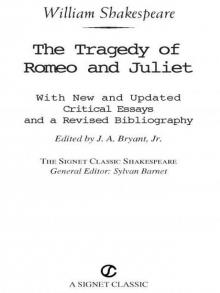 Romeo and Juliet
Romeo and Juliet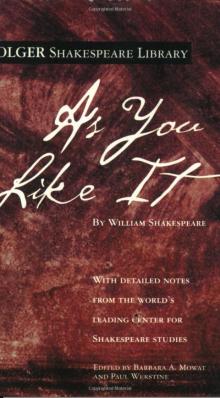 As You Like It (Folger Shakespeare Library)
As You Like It (Folger Shakespeare Library)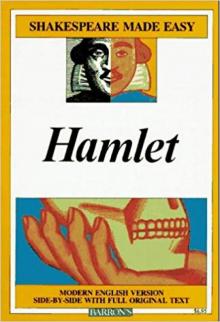 Hamlet
Hamlet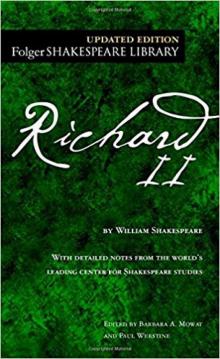 Richard II (Folger Shakespeare Library)
Richard II (Folger Shakespeare Library)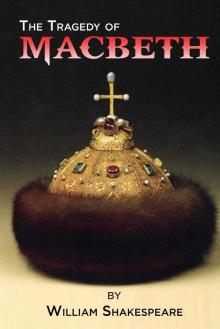 Macbeth
Macbeth Henry V
Henry V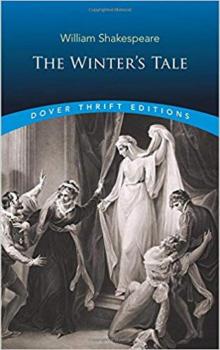 The Winter's Tale
The Winter's Tale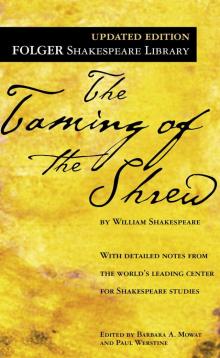 The Taming of the Shrew
The Taming of the Shrew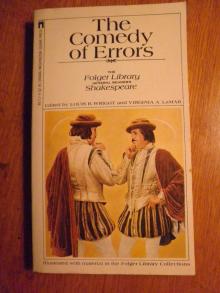 The Comedy of Errors
The Comedy of Errors King Lear (Folger Shakespeare Library)
King Lear (Folger Shakespeare Library)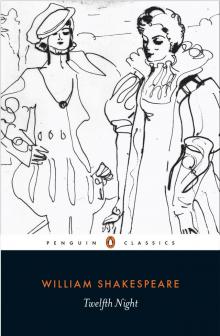 Twelfth Night
Twelfth Night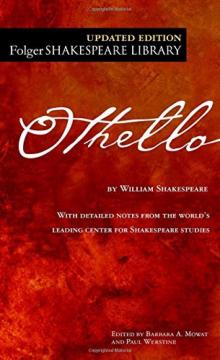 Othello
Othello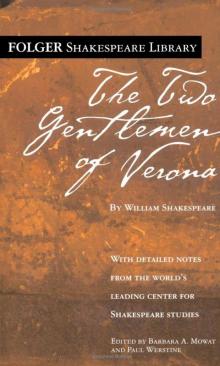 The Two Gentlemen of Verona
The Two Gentlemen of Verona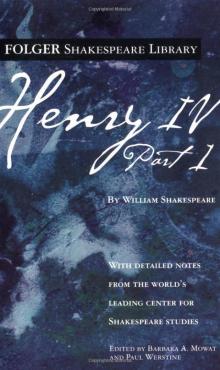 Henry IV, Part 1 (Folger Shakespeare Library)
Henry IV, Part 1 (Folger Shakespeare Library)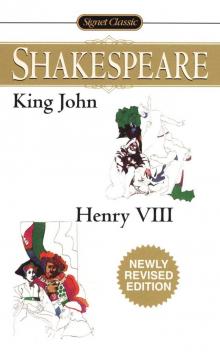 King John/Henry VIII (Signet Classics)
King John/Henry VIII (Signet Classics) The Tempest
The Tempest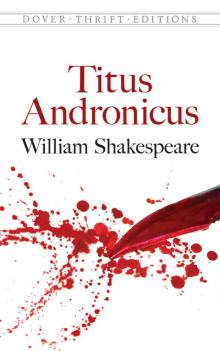 Titus Andronicus (Dover Publications)
Titus Andronicus (Dover Publications)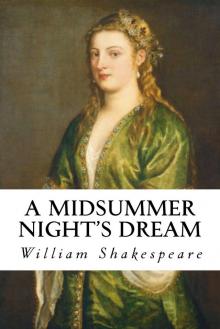 A Midsummer Night's Dream
A Midsummer Night's Dream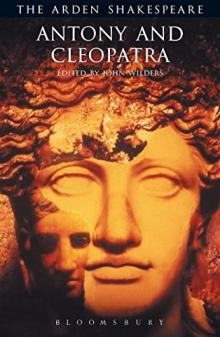 Antony and Cleopatra (Arden Shakespeare: Third Series)
Antony and Cleopatra (Arden Shakespeare: Third Series) The Oxford Shakespeare: Henry IV, Part 2 (Oxford World's Classics)
The Oxford Shakespeare: Henry IV, Part 2 (Oxford World's Classics)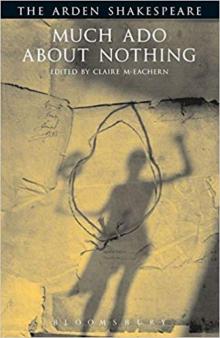 Much Ado About Nothing (Arden Shakespeare: Third Series)
Much Ado About Nothing (Arden Shakespeare: Third Series)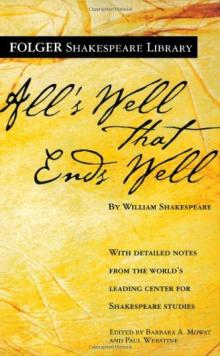 All's Well That Ends Well
All's Well That Ends Well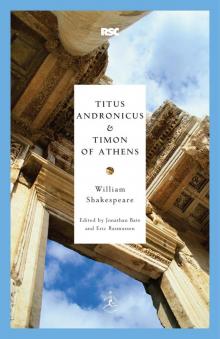 Titus Andronicus & Timon of Athens
Titus Andronicus & Timon of Athens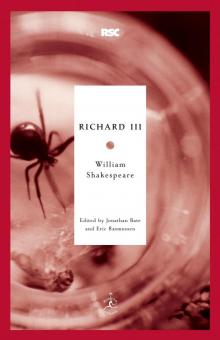 Richard III (Modern Library Classics)
Richard III (Modern Library Classics) Coriolanus
Coriolanus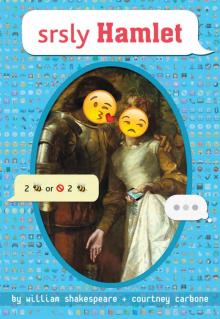 srsly Hamlet (OMG Shakespeare)
srsly Hamlet (OMG Shakespeare)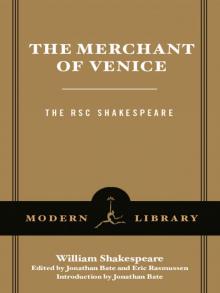 The Merchant of Venice
The Merchant of Venice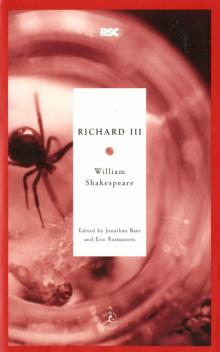 Richard III
Richard III Richard II
Richard II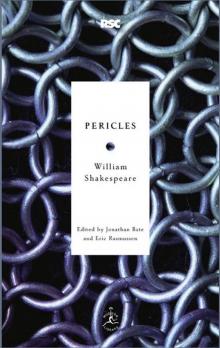 Pericles
Pericles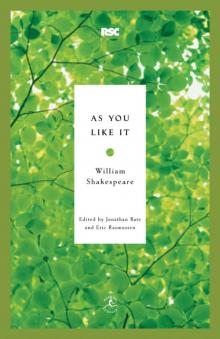 As You Like It
As You Like It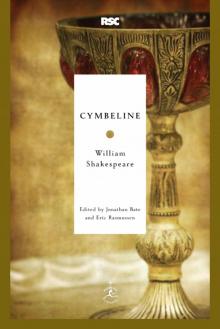 Cymbeline
Cymbeline Alls Wel that ends Well
Alls Wel that ends Well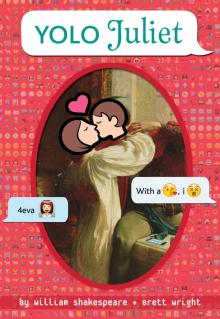 YOLO Juliet
YOLO Juliet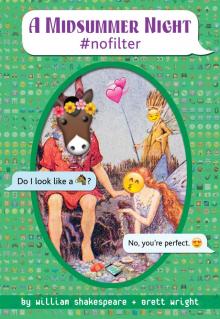 A Midsummer Night #nofilter
A Midsummer Night #nofilter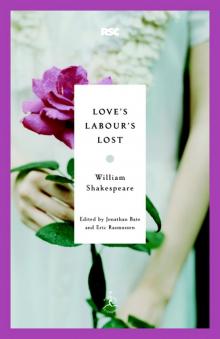 Love's Labour's Lost
Love's Labour's Lost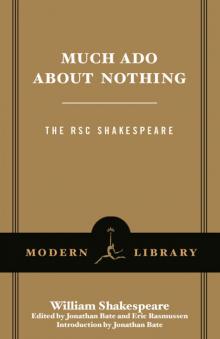 Much Ado About Nothing
Much Ado About Nothing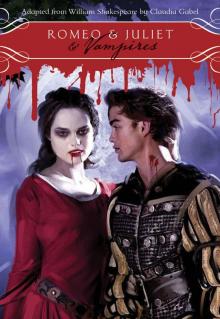 Romeo & Juliet & Vampires
Romeo & Juliet & Vampires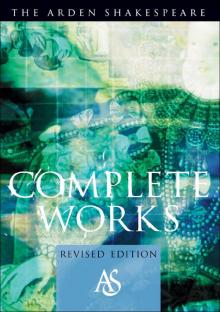 The Arden Shakespeare Complete Works
The Arden Shakespeare Complete Works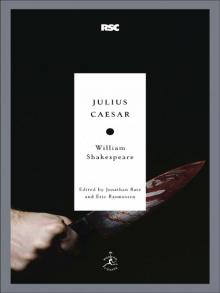 Julius Caesar
Julius Caesar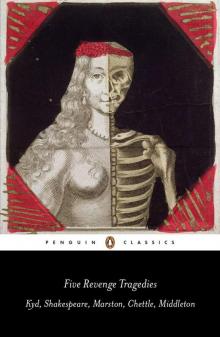 Five Revenge Tragedies: The Spanish Tragedy, Hamlet, Antonio's Revenge, The Tragedy of Hoffman, The Revenger's Tragedy (Penguin Classics)
Five Revenge Tragedies: The Spanish Tragedy, Hamlet, Antonio's Revenge, The Tragedy of Hoffman, The Revenger's Tragedy (Penguin Classics)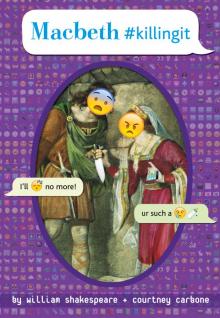 Macbeth #killingit
Macbeth #killingit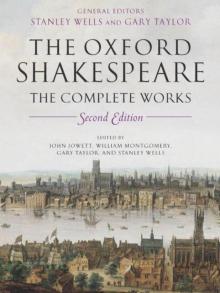 The Oxford Shakespeare: The Complete Works
The Oxford Shakespeare: The Complete Works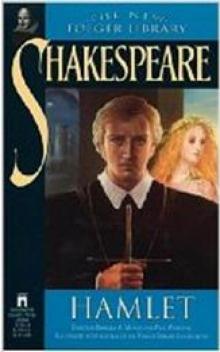 Hamlet, Prince of Denmark (Collins edition)
Hamlet, Prince of Denmark (Collins edition)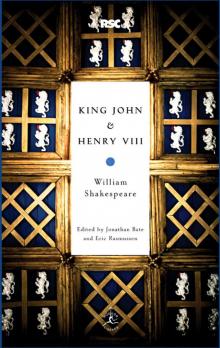 King John & Henry VIII
King John & Henry VIII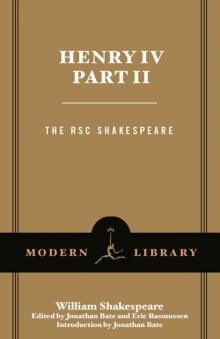 Henry IV, Part 2
Henry IV, Part 2 Complete Plays, The
Complete Plays, The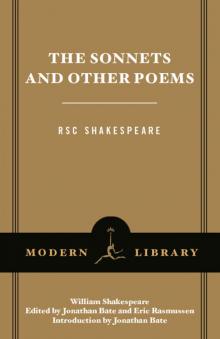 The Sonnets and Other Poems
The Sonnets and Other Poems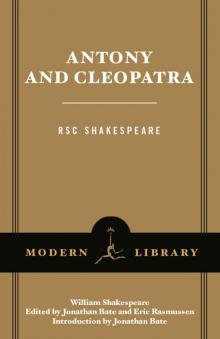 Antony and Cleopatra
Antony and Cleopatra Henry IV, Part 1
Henry IV, Part 1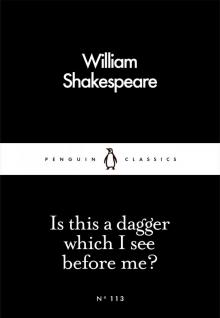 Is This a Dagger Which I See Before Me?
Is This a Dagger Which I See Before Me? The Complete Works of William Shakespeare In Plain and Simple English (Translated)
The Complete Works of William Shakespeare In Plain and Simple English (Translated)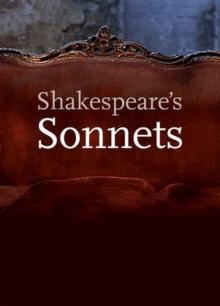 The Sonnets
The Sonnets